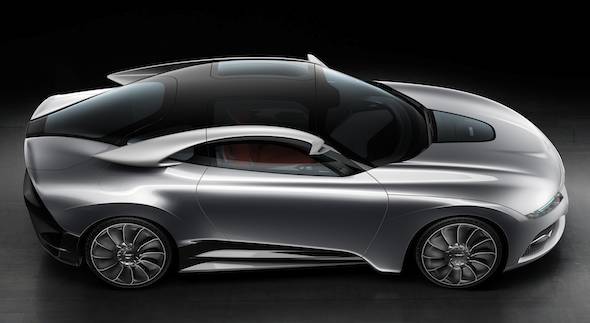Saab Rises from its Ashes at the New York Auto Show
The New York International Auto show wraps up this Sunday, concluding another round of the World Car Awards. While the World Car of 2011 and the World Green Car of 2011 respectively went to the Nissan Leaf and the Chevy Volt, the luxury market was represented with victories by the Ferrari 458 Italia (2011 World Sports Car) and the Aston Martin Rapide (2011 World Design Car). In other words, no brand new concept or production debuts won any of the top awards, begging me to determine my own winner – the Saab PhoeniX concept car.
OK, just to be clear, the PhoeniX actually made its world debut last month at the Geneva Motor Show. But the New York show marked the car’s North American debut, and with little else new on display worthy of accolades (a downmarket rally car of a Mercedes? A hybrid-powered Porsche Panamera?), my nod has to go to the PhoeniX.
Saab hired Jason Castriota last June to breathe new life into the Swedish company’s design, and the onetime Pininfarina and Bertone stylist has obviously taken the task to heart. With a resume that includes cars like the Ferrari 599 GTB Fiorano, the Maserati GranTurismo, and last fall’s SSC Ultimate Aero II, there’s no doubt that Castriota has the potential to reinvigorate Saab’s aging design language. But did anyone suspect that he would produce a car as sporty as the PhoeniX?
In recent years, automotive designers have frequently coined a term to describe their styling philosophy (think Chris Bangle’s controversial “flame surfacing” with BMW), and Castriota has followed this trend with his concept of “aeromotional design.” Though the term doesn’t explain anything specific beyond a general concept of emotional content within aerodynamic packaging (and what self-respecting automotive designer doesn’t strive to do that?), the evocation of aeronautic concepts is particularly relevant with Saab, a company that cut its teeth in jet fighter design.
There’s no denying that the PhoeniX is the most aerodynamic and sporty car from Saab since the short-lived Sonett coupes of the early 70s, even if it is just a concept that will likely never reach production. The sports car-worthy body features scissor doors as well as unique roof-based “winglets” that run between the front and rear pillars and theoretically manage airflow to reduce lift and improve stability without adding drag. Under the hood, the PhoeniX features an efficient turbocharged 1.6-liter gasoline engine that distributes power to a rear-axle electric drivetrain. The electric motor’s battery is also replenished by regenerative braking that feeds charge back to the unit. As one would expect from these specs, performance figures are not the car’s primary selling point, with the engine developing just 200 hp and enabling the car to reach 60 mph from standstill in 5.9 seconds.
From an interior ergonomic standpoint, the PhoeniX is not visually marred by any mirrors, and instead utilizes back-up cameras for rear view. The scissor doors allow easier ingress and egress for the 2+2 seating configuration, and the driver is greeted by an 8” touchscreen interface that automatically syncs with the internet when the car is started and lies as close to the driver’s fingertips as the steering wheel, itself. Castriota has clarified that we can expect some of the car’s features, such as the new grille and hood forms, to find their way to future production models.
Saab’s development of an attractive sports coupe (albeit a concept) ironically highlights its yet-to-be-finalized relationship with Spyker, the Dutch supercar manufacturer that landed a well-publicized winning bid to acquire the Swedish company late last year. Since then, Spyker has spun off production of its signature low–volume exotic cars to an English firm, suggesting that the company never figured out how to produce its own cars at a profit. Furthermore, a recent Spyker press release announced that at least two of Europe’s financial institutions with fingers in the Saab pie may yet hold up the final execution of the sale. But it’s nice to know that if the deal falls through, Saab has given some thought to in-house notions of a new sports car, and the ever challenging paradigm of rising from one’s ashes – like a PhoeniX!





















